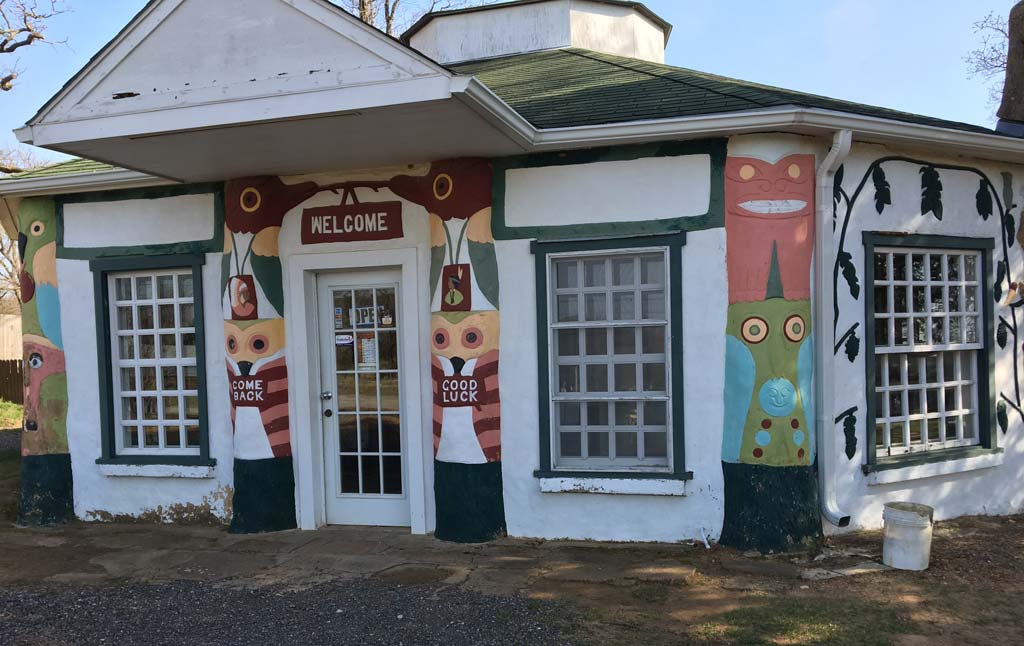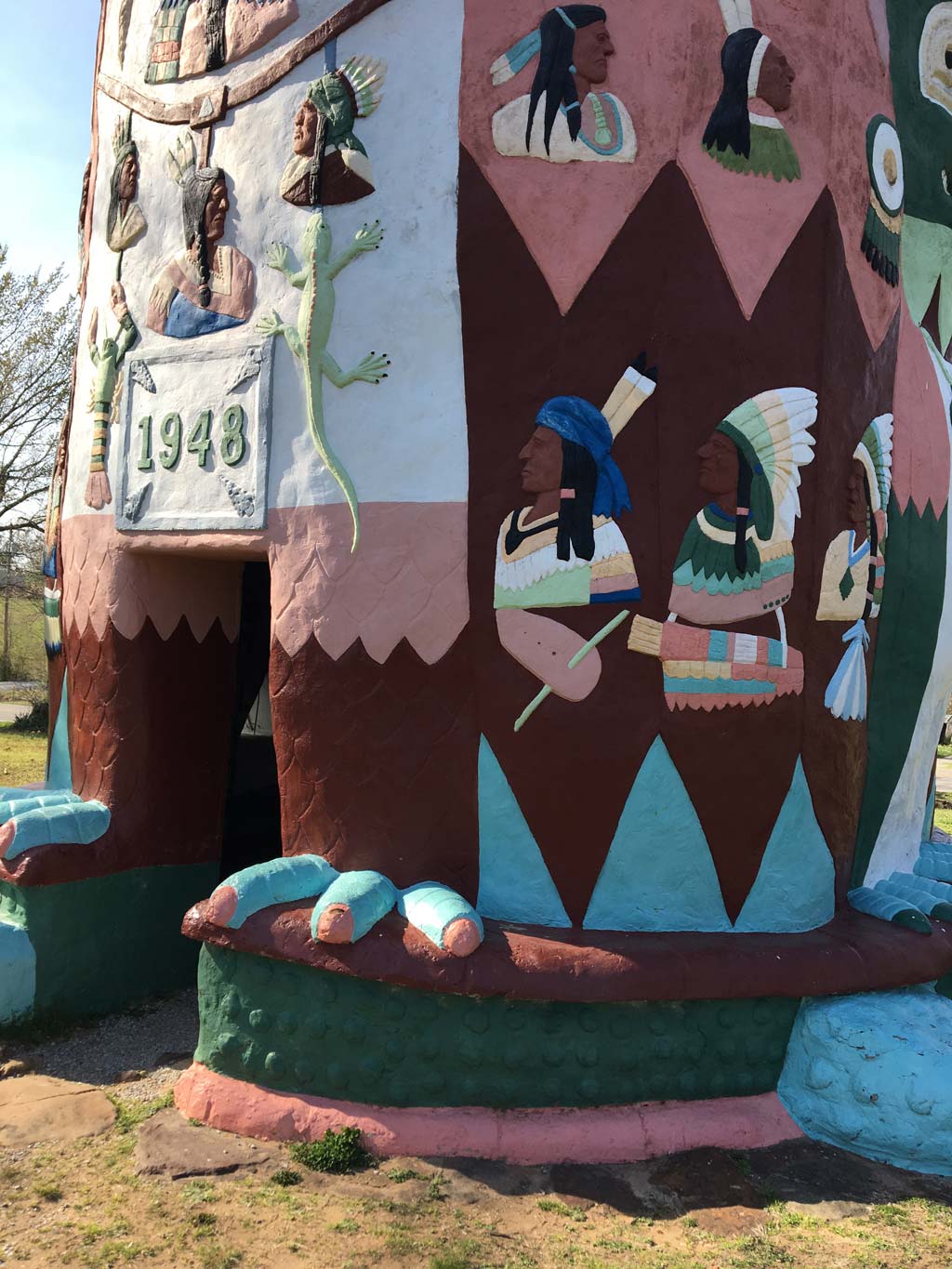
Photos by Kimberly Burk
Ed Galloway’s Totem Pole Park and the Blue Whale were handcrafted from concrete by imaginative men who wanted others to enjoy the fruits of their labor.
Both places fell on hard times but were restored with the help of volunteers and public and private funding – an ongoing effort for both today.
Route 66 trekkers have many eye-catching choices visible from the Mother Road, but many consider Totem Pole Park worth the 3.65-mile detour. About a dozen stone and concrete sculptures adorn the park, and the 90-foot pole featuring 200 bas-relief depictions of Native Americans and nature is the centerpiece.

“Most visitors just can’t imagine one man doing that,” says Patsy Anderson, who voluntarily manages the park with her husband, David. “[Galloway] was an amazing, creative man.”
Born in 1880 in Springfield, Missouri, Galloway carved wood as a youngster and came to Oklahoma to teach manual arts to orphaned boys at the Sand Springs Home. The Totem Pole Park took shape after he and his wife retired and bought the property in 1937.
The totem pole, completed in 1948, has a thick, concrete skin and was made from sandstone and framed with steel and wood, according to the National Park Service. The hollow structure rests on a large piece of sandstone, already in place at the site, which Galloway carved and painted as a turtle because that’s what it looked like to him.
The park fell into disrepair after Galloway’s death in 1962. In 1982, the Kansas Grassroots Art Association took an interest and spent 16 years restoring it. It was added to the National Register of Historic Places in 1999.
Erin Turner, a social practice artist and Oklahoma native who lives in New York, is involved with the latest restoration, which began in 2014. At an April preservation conference in Tulsa, Turner said the project would replace the totem pole’s weathered paint with a mineral-based silicate that is environmentally safe, won’t fade or peel, repels water and resists algae.

The park is now a nonprofit owned by the Rogers County Historical Society, Patsy Anderson says, and gift shop sales and fundraisers such as an annual barbecue keep it open to the public. The top half of the totem was repainted a few years ago for $43,000, and supporters want to raise about $30,000 through grants and other sources to finish the job.
Plans call for replacing the paint on the picnic tables, concrete replicas of trees and other structures in the park, and renovating the interior of the Fiddle House, an 11-sided building that serves as the gift shop, museum and exhibit space for Galloway’s handmade fiddles and furniture.
“It’s just a nice relaxing place to go,” Patsy Anderson says. “It’s fun meeting all the people from everywhere. They are always friendly.”
Twenty-two miles southwest on Route 66 sits the Blue Whale, built by Hugh Davis, director of the Tulsa Zoo for 35 years, as an anniversary gift for his wife, Zelta, according to Linda G. Ross-Hobbs, who manages the gift shop.
The property is still owned by the family, but the gift shop, which maintains the site, is run by the Catoosa Arts and Tourism Society.
The wooden walkway through the belly of the 80-foot whale, which rests on the edge of a pond, is scheduled for renovation this summer, Ross-Hobbs says.

“The [whale’s] concrete has done amazingly well,” she says. “It does need to be power-washed, and it will need a paint job soon.”
Davis was in his 60s when he started building the whale in 1970, according to a history written by his daughter, Dee Dee Belt, for the Catoosa Historical Society. His friend Harold Thomas, a welder, made the framework. Davis hand-mixed and applied the concrete one 5-gallon bucket at a time.
The whale, closed for a time after Davis fell ill, was restored by the Catoosa Chamber of Commerce in 1997. Hugh and Zelta Davis died in 1990 and 2001, respectively.
According to Belt’s article, her father “believed that every day was a beautiful day, that people should use the talents God gave them, that one should keep busy by thinking, planning and creating.”
Catch-and-release fishing is allowed at the pond, which is never stocked but contains largemouth bass, perch, bluegill and catfish, Ross-Hobbs says. Hybrid grass carp eat everything green and keep the pond clean, she says.
The 14-acre property includes the remains of an ark and an alligator farm that were once part of the attraction, and picnic tables invite visitors to relax on the shaded banks of the pond.
“People linger. They say it’s a peaceful place,” Ross-Hobbs says. “What I hear the most is they love the history about this man and his wife.”






















